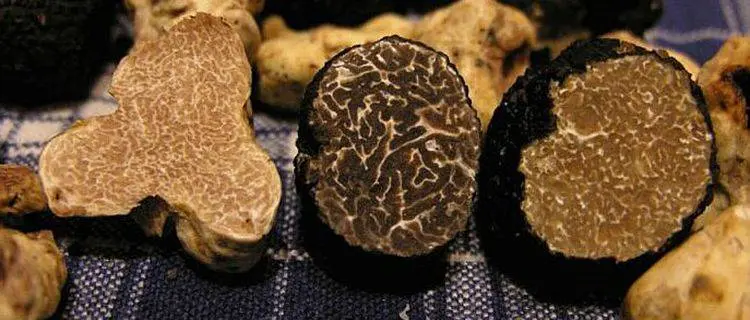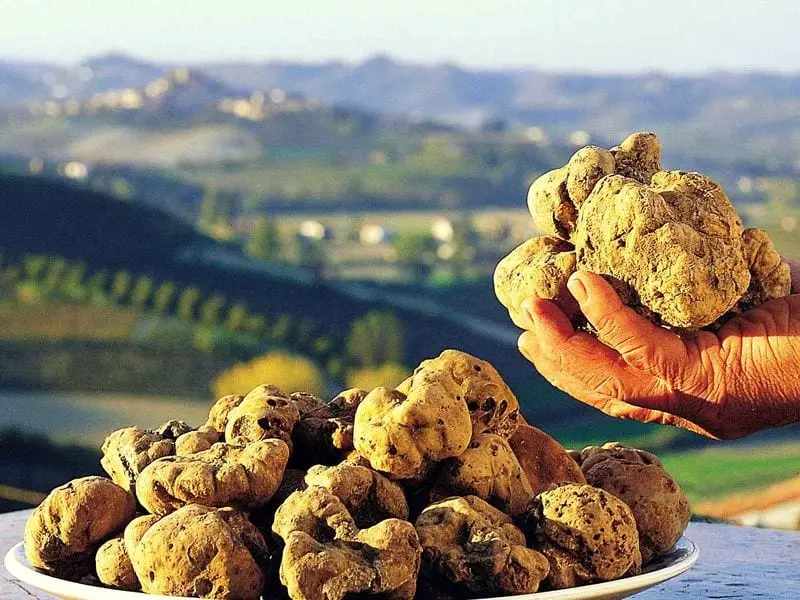Contents
- Description
- Mushroom truffle: description and characteristics. What does a truffle look like?
- Types of truffles, names and photos
- Black summer truffle (Russian truffle) (Tuber aestivum)
- Black Autumn Burgundy Truffle (Tuber mesentericum)
- Black winter truffle (Tuber brumale)
- Black Perigord (French) Truffle (Tuber melanosporum)
- Black Himalayan Truffle (Tuber himalayensis)
- White Piedmont (Italian) Truffle (Tuber magnatum)
- White Oregon (American) truffle (Tuber oregonense)
- Truffle red (Tuber rufum)
- Red glitter truffle (Tuber nitidum)
- Where and how do truffles grow?
- Where do truffles grow in Russia?
- Growing truffles at home
- How to find truffles? Animals to search for mushrooms
- Useful properties of truffles
- 5 Interesting facts about truffle
Description
Truffle (Tuber) is the most expensive mushroom in the world, a rare and delicious delicacy with unique taste and strong specific aroma. The mushroom got its name due to the similarity of its fruiting body with potato tubers or cones (the Latin phrase terrae tuber corresponds to the concept of “earthen cones”).
Mushroom truffle belongs to the department of ascomycetes, the subdivision of Pezizomycotina, the class of pec, the order of pec, the truffle family, the genus of truffle.
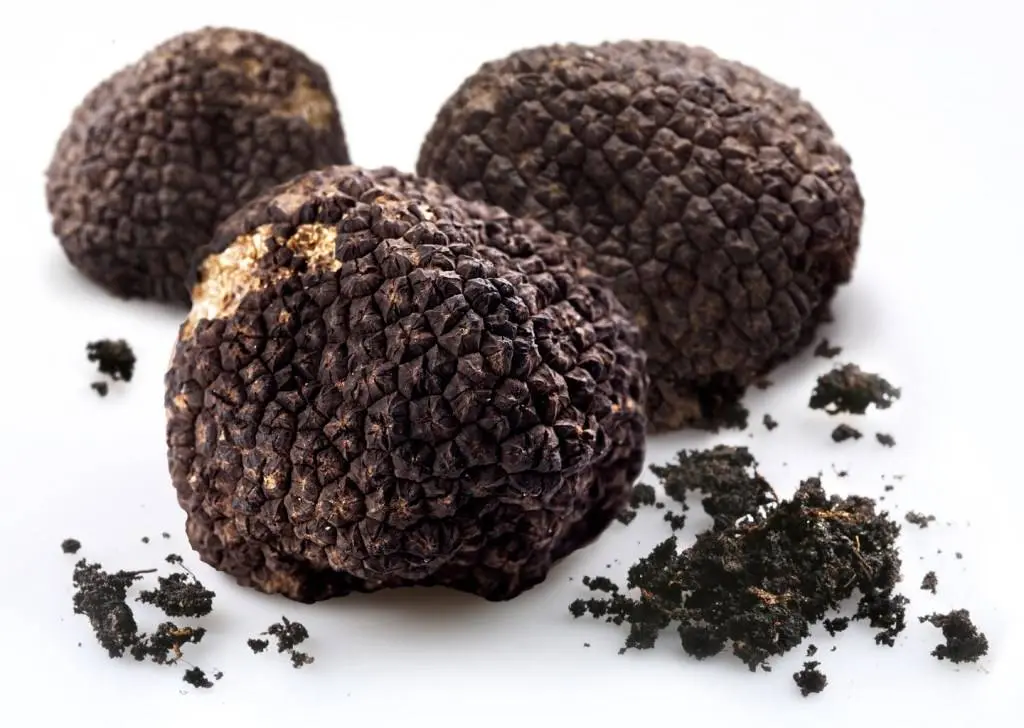
Mushroom truffle: description and characteristics. What does a truffle look like?
In most cases, a truffle mushroom is slightly larger than a nut, but some specimens can be larger than a large potato tuber and weigh more than 1 kilogram.
The truffle itself looks like a potato. The outer layer (peridium) covering the fungus can have a smooth surface or numerous cracks, and it can also be covered with characteristic multifaceted warts.
The cross-section of the mushroom has a distinct marble texture. It is formed by the alternation of light “internal veins” and “external veins” of a darker shade, on which spore bags are located, which have various shapes.
The color of the truffle pulp depends on the species: it can be white, black, chocolate, gray.
Types of truffles, names and photos
The genus of truffles includes more than a hundred species of mushrooms, which are classified both according to their biological and geographical group and in terms of gastronomic value (black, white, red).
The most famous truffles are:
Black summer truffle (Russian truffle) (Tuber aestivum)
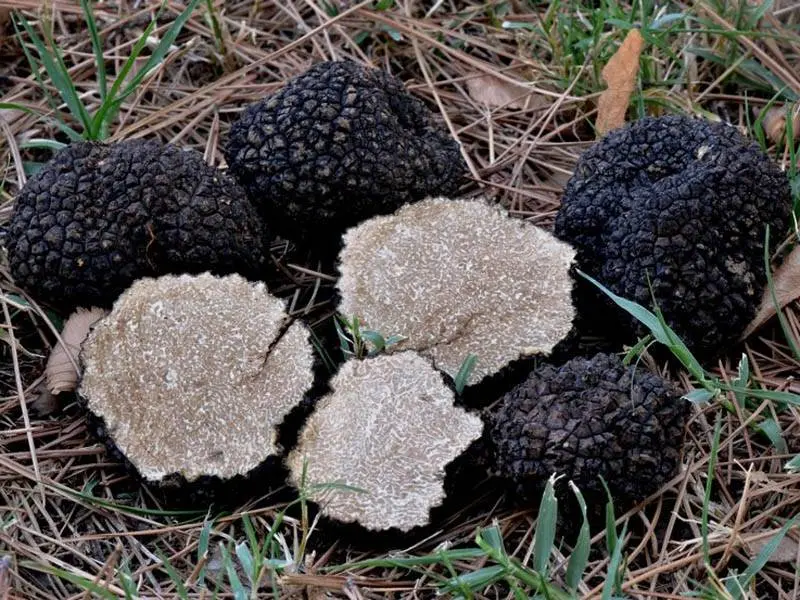
It reaches 10 cm in diameter and weighs 400 grams. Age-related changes in the flesh of a truffle are expressed in a color change from whitish tones to yellow-brown and gray-brown shades. Its consistency also changes from dense in young mushrooms to loose in old ones. Russian truffle has a sweet nutty flavor and a subtle algae smell.
This type of truffle grows in the Transcaucasia and Crimea, in the European part of Russia and in Europe. It is found under such trees as oak, pine, hazel. Fruiting from June to early October.
Black Autumn Burgundy Truffle (Tuber mesentericum)
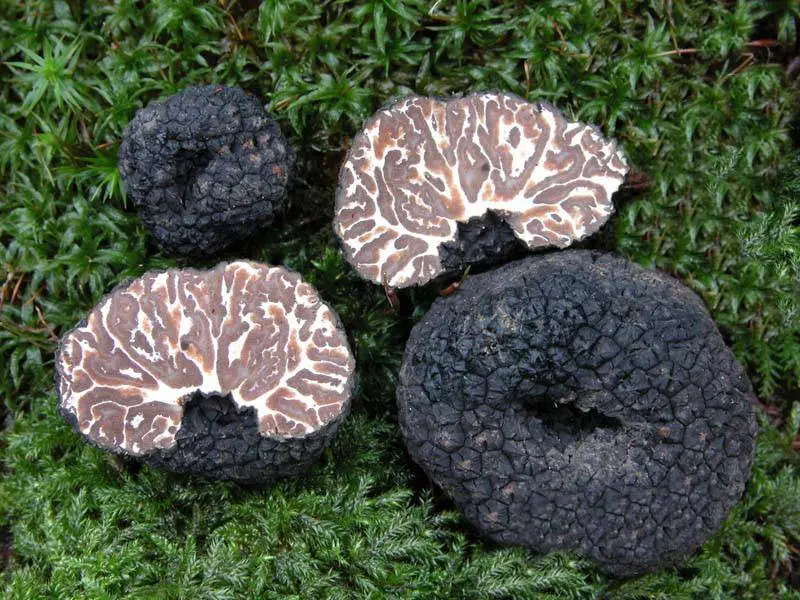
The mushroom is round in shape and weighing up to 320 g, not exceeding 8 cm in size. The pulp of a mature truffle has the color of milk chocolate, penetrated with white veins. The aroma of the truffle has a pronounced shade of cocoa, the mushroom itself has a bitter taste.
Black winter truffle (Tuber brumale)
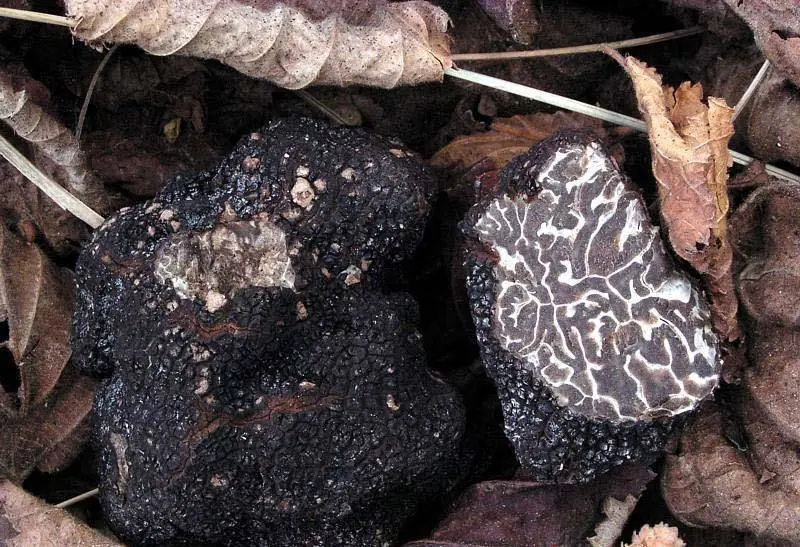
The shape of the fruit bodies can be either irregularly spherical or almost spherical. The size of the truffle varies from 8 to 15-20 cm, and the weight can reach 1.5 kg. The red-violet surface of the fungus is covered with polygonal warts. With age, the color of the peridium turns black, and the white flesh turns gray-purple. Winter truffle has a pleasant, pronounced musky aroma.
This type of truffle grows from November to January-February on moist soils under hazel or linden. It can be found in France, Italy, Switzerland and Ukraine.
Black Perigord (French) Truffle (Tuber melanosporum)

Fruits are irregular or slightly rounded, reaching 9 cm in section. The surface of the fungus, covered with four or hexagonal warts, changes its color from reddish brown to coal black with age. The light flesh of a truffle sometimes with a pink tint turns dark brown or black-purple as it ages.
Fruiting from December to late March. It is cultivated in Europe and Crimea, Australia, New Zealand, China, South Africa. Among black truffles, this type is considered the most valuable; it is even called the “black diamond”. It has a strong aroma and pleasant taste. The name of the mushroom comes from the name of the region of Perigord in France.
Black Himalayan Truffle (Tuber himalayensis)
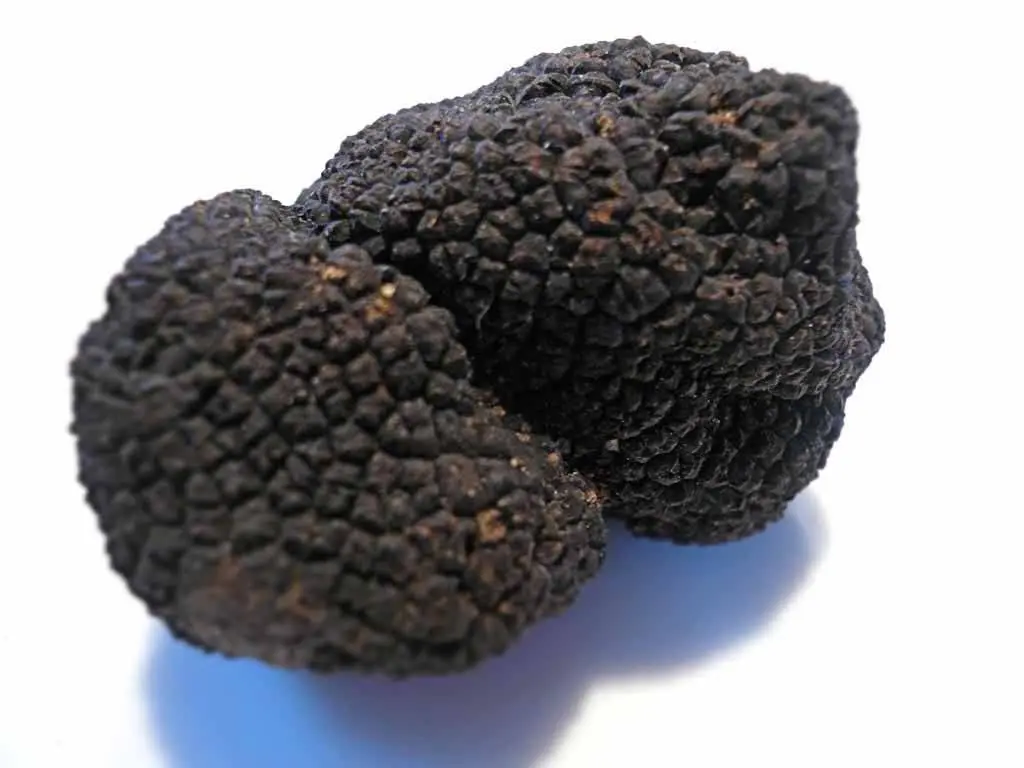
A mushroom with small fruit bodies and weighing up to 50 g. Due to its small size, this truffle is quite difficult to find.
White Piedmont (Italian) Truffle (Tuber magnatum)
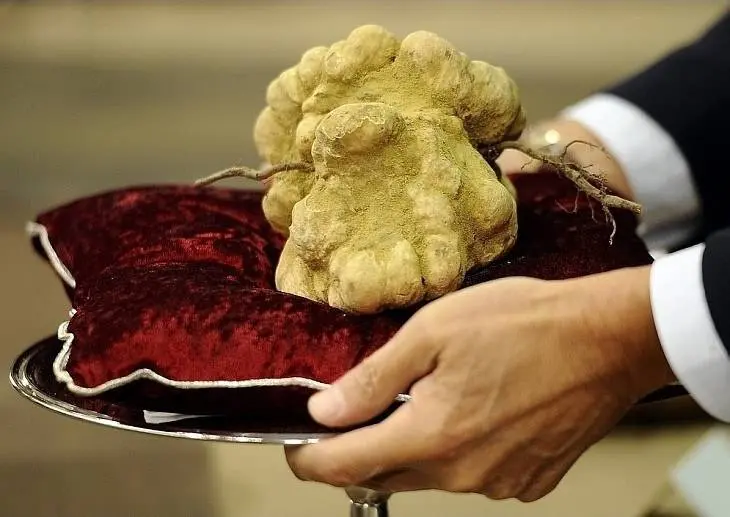
Fruit bodies have an irregular tuberous shape and reach up to 12 cm in diameter. Basically, the weight of a truffle does not exceed 300 g, but rare specimens can weigh up to 1 kilogram. Peridium is yellowish-red or brownish in color. The pulp is white or creamy, sometimes with a slight red tint.
The Piedmont truffle is the most valuable of the white truffles and is considered the most expensive mushroom in the world. The Italian truffle tastes good and the aroma is reminiscent of cheese and garlic. A mushroom grows in northern Italy.
White Oregon (American) truffle (Tuber oregonense)

The fungus reaches 5-7 cm in diameter and weighs up to 250 g. It grows on the west coast of the United States. Usually found in the top layer of soil, which consists of crumbling needles. For this reason, the aroma of truffle has floral and herbal notes.
Truffle red (Tuber rufum)
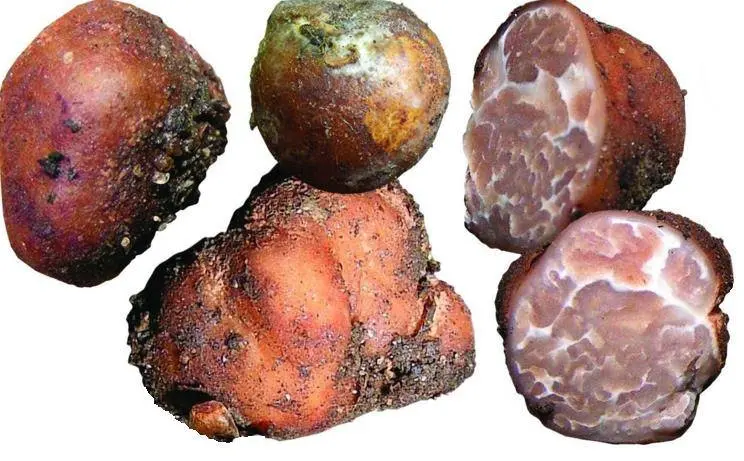
Has a herbal-coconut aroma with a wine flavor. The size of the mushrooms does not exceed 4 cm, and the weight is 80 g. The pulp is dense. It grows mainly in Europe in deciduous and coniferous forests. Fruiting time is from September to January.
Red glitter truffle (Tuber nitidum)
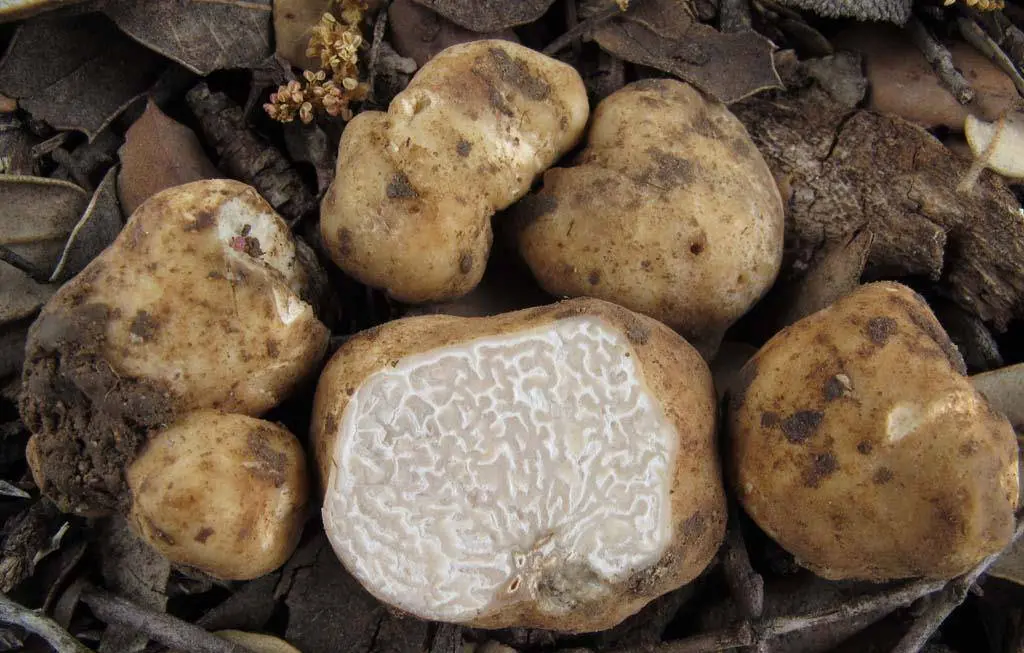
This truffle has a distinct wine-pear-coconut aroma. Fruiting bodies reach 3 cm in diameter and weigh up to 45 g. Grows in deciduous and coniferous forests. Fruiting time from May to August (sometimes, under favorable conditions, bears fruit from April to September).
Autumn Truffle (Burgundy) (Tuber uncinatum)

Another type of French black truffle. It grows mainly in the northeastern regions of France, it is found in Italy, very rarely in the UK. The mushroom has a very expressive hazelnut aroma with a light “chocolate” note, is highly valued by gourmets for its excellent gastronomic features and “affordable” price compared to other varieties of truffles: the price of a truffle is within 600 euros per 1 kilogram.
This type of truffle ripens in June-October, depending on climatic conditions. The pulp of the mushroom is quite dense, and its consistency does not change throughout the entire period of ripening, it has a gray-brown color with frequent interspersed with light “marble” veins.
Chinese (Asian) Truffle (Tuber sinensis, Tuber indicum)
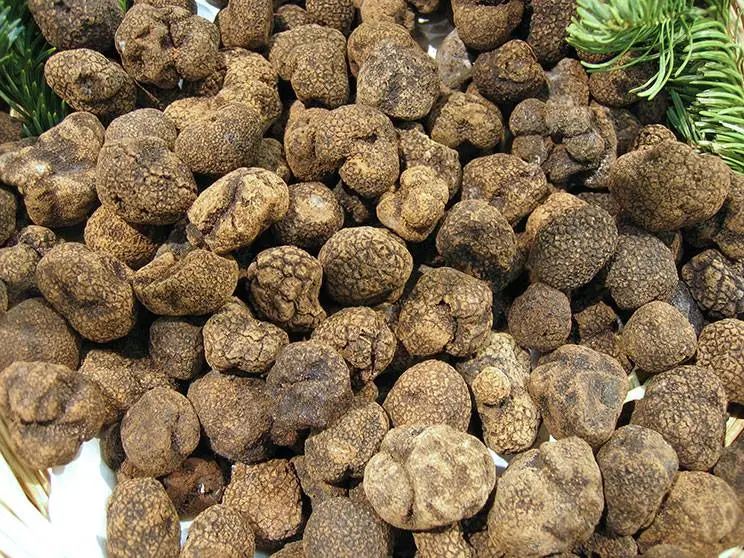
Despite its name, the first mushroom of this species was found not in China, but in the Himalayan forests, and only a century later, the Asian truffle was found in China.
In terms of taste and intensity of aroma, this mushroom is significantly inferior to its brother – the black French truffle, nevertheless, it is quite relevant for connoisseurs of such a delicacy. The flesh of the mushroom is dark brown, sometimes black, with multiple streaks of a grayish-white hue.
The Chinese truffle grows not only in Chinese territory: it is found in India, in the forests of Korea, and in the fall of 2015, one of the residents of the Russian city of Ussuriisk found a truffle right on his personal plot, in a garden under a young oak tree.
Where and how do truffles grow?
Truffle mushrooms grow underground in small groups, in which there are from 3 to 7 fruiting bodies, which have a gristly or fleshy consistency.
The distribution area of truffles is very extensive: this delicacy is harvested in deciduous and coniferous forests of Europe and Asia, North Africa and the United States of America.
For example, the mycelium of the Piedmontese truffle, which grows in northern Italy, forms a symbiosis with the roots of birch, poplar, elm and linden, and the fruit bodies of the black Perigord truffle can be found in Spain, Switzerland and the south of France in groves consisting of oak, hornbeam or beech trees.
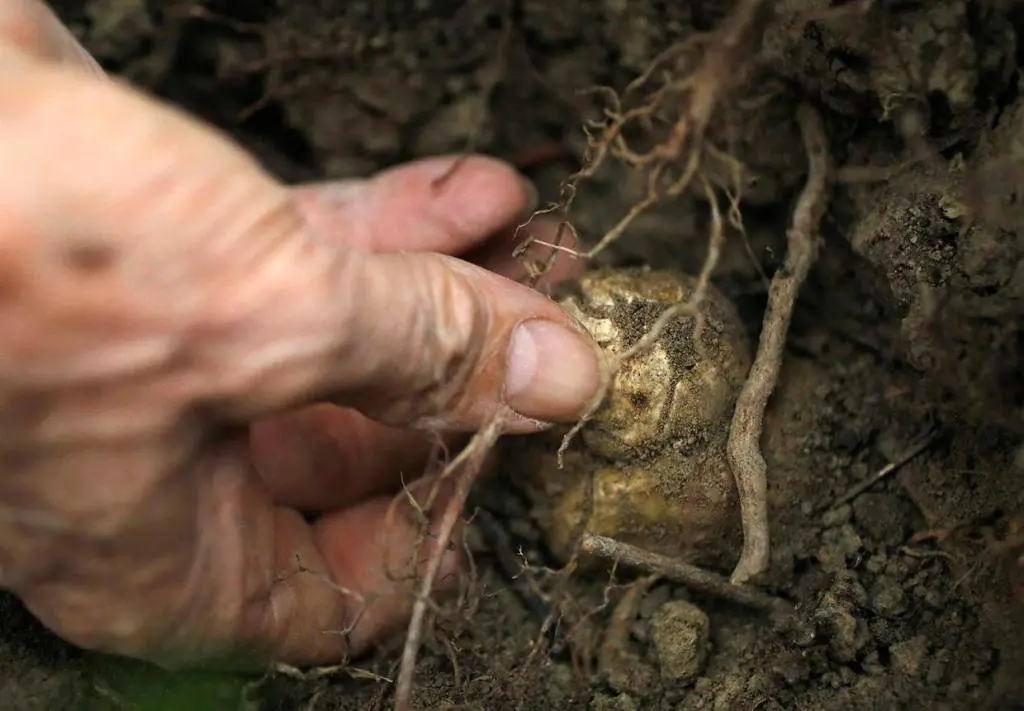
Summer black truffle prefers deciduous or mixed forests and calcareous soils of Central Europe, Scandinavia, the Black Sea coast of the Caucasus, Ukraine, as well as certain regions of Central Asia.
The winter truffle grows not only in the groves of Switzerland and France, but also in the mountain forests of the Crimea. The fruit bodies of the white Moroccan truffle can be found in the forests along the Mediterranean and North African coastlines. This truffle mushroom grows near the roots of cedar, oak and pine.
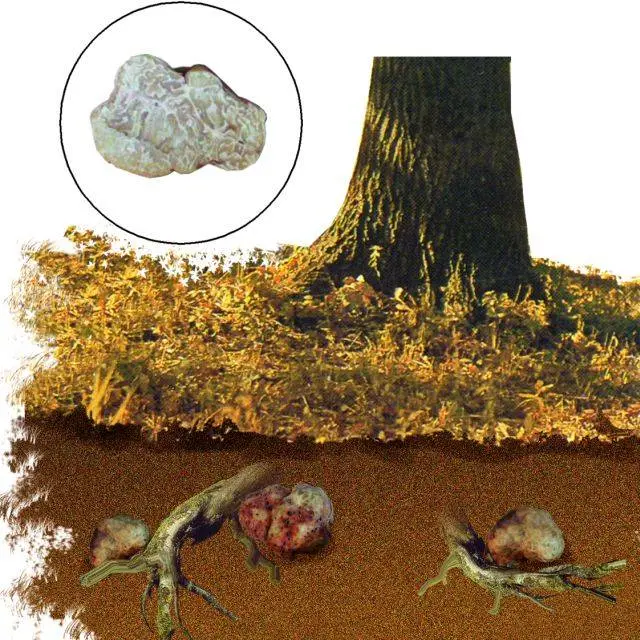
Where do truffles grow in Russia?
Summer truffles (black Russian truffle) grow in Russia. They are found in the Caucasus, on the Black Sea coast, in the Crimea in deciduous and mixed forests. It is better to look for them under the roots of hornbeam, beech, oak. They are rare in coniferous forests.
You can also find winter truffles in Crimea. This mushroom grows from November to February-March.
White truffles (golden truffles), which are a very rare species, also grow in Russia. They can be found in Vladimir, Oryol, Kuibyshev, Nizhny Novgorod, Smolensk and Samara regions. White truffles also grow on the territory of the Moscow region (in the Moscow region) and the Leningrad region.
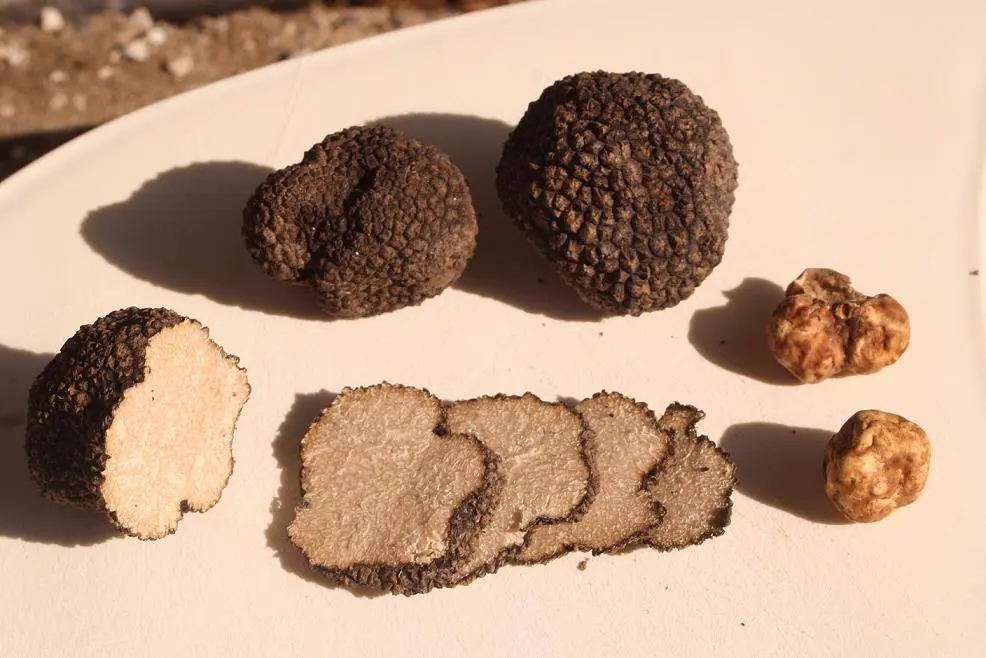
Growing truffles at home
Many people ask the question whether it is possible to grow truffles on their own, how to grow this mushroom and what are the conditions for growing truffles. In nature, the spread of these mushrooms occurs thanks to forest dwellers who find a ripe mushroom and eat it.
The spores of truffles, together with the fecal matter removed from the animal’s body, enter the root system of the tree and form a symbiosis with it. However, in many European countries and the PRC, artificial cultivation of black truffles has been widespread for many years. It is noteworthy that white truffles do not lend themselves to cultivation.
Successful truffle breeding requires several factors to coincide: optimal weather conditions, suitable soil and appropriate trees. Today, to create truffle plantations, man-made oak groves are planted from the acorns of the tree under which the mushroom was found.
Another option is to infect the seedling roots with specially prepared truffle mycelium. Cultivation of truffles is a long and costly process, so the price of a home-grown truffle differs little from the price of a natural truffle, although the taste of artificial mushrooms is somewhat lower.
How to find truffles? Animals to search for mushrooms
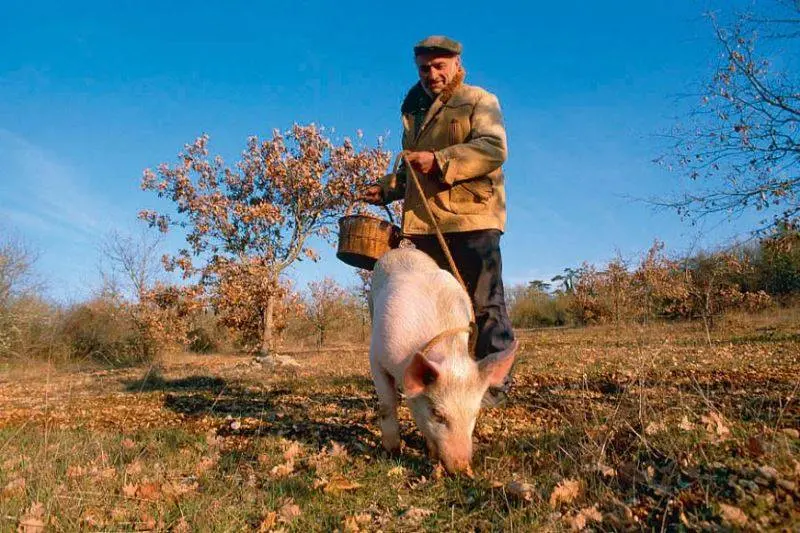
Searching for and collecting truffles is not easy: lovers of “quiet hunting” use a lot of tricks and subtleties to come home with the desired prey. The place where you can find truffles is usually distinguished by some stunted vegetation, the ground has a gray-ash color.
The fungus rarely comes out to the surface of the soil, more often it hides in the ground, but you should pay attention to the hillocks: if it seemed to you that the place here is “truffle”, do not be too lazy to dig a few hills – you may stumble upon a family of delicious mushrooms.
True professional mushroom pickers while hunting for truffles can determine the “dislocation” of mushrooms by simply tapping the ground with a stick, but this is already an experience gained over the years. Often, midges are circling over mature truffles, which can also help in the search for a forest delicacy.
Mushroom truffle is a source of a very strong smell, and if it is impossible for a person to catch it under a layer of soil, then animals feel it at a distance. It is on this fact that the method is based, when animals were specially trained to search for truffles: dogs and even pigs!
Surprisingly, the pig is able to smell the truffle at a distance of 20-25 meters. Then she begins to zealously dig out the delicacy, so the main task of the mushroom picker is to distract the animal as soon as it “makes a stand” on the mushroom.
For dogs, the truffle itself is absolutely not interesting in terms of food, but these four-legged “detectives” have to be trained for a long time in order to train them to smell the truffle.
By the way, a good mushroom picking dog today can cost more than 5,000 euros.

Useful properties of truffles
The unique culinary properties of truffles have long been known. They are suitable both for making pies, sauces and pie fillings, and as an addition to poultry and seafood dishes. Sometimes they can be served as a separate dish. Truffles can be harvested for future use by freezing or canning in high-quality cognac.
The truffle contains vegetable proteins, carbohydrates, vitamins of group B, PP and C, various minerals, antioxidants, pheromones, which help to improve the emotional state of a person, and a large amount of fiber.
Truffle juice is good for some eye diseases, and the pulp of the mushroom brings relief to people suffering from gout. There are no special contraindications for eating these mushrooms, the main condition is the freshness of the mushroom and the absence of allergic reactions to penicillin in humans.
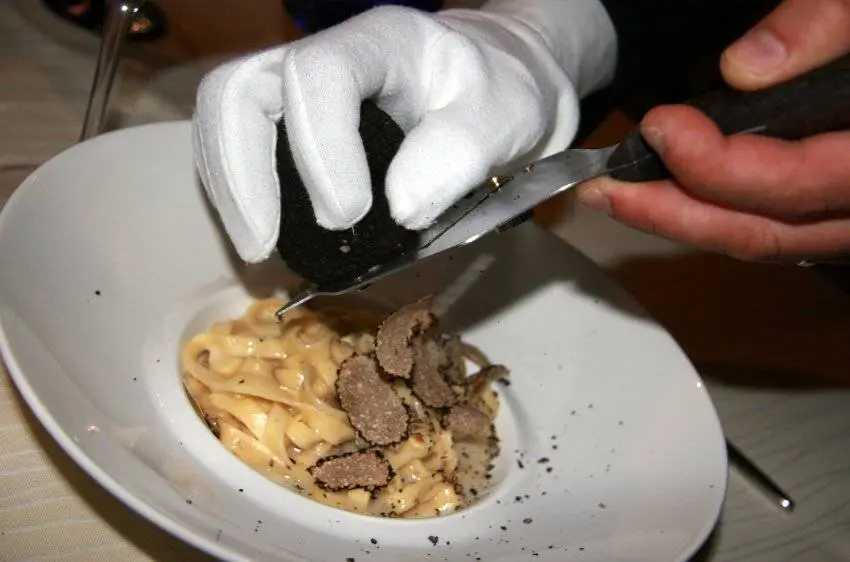
5 Interesting facts about truffle
- Ripe truffles are believed to contain anandamide, a substance that acts on the human nervous system in the same way as marijuana.
- Truffles are hunted at night due to the fact that in the cool air, searching dogs or pigs better catch the aroma of mushrooms.
- Earlier in Italy, specially trained pigs were involved in the search and collection of truffles. However, due to the fact that they not only severely destroy the upper soil layer, but also strive to eat prey, they were replaced by dogs.
- In Russia, before the 1917 revolution, bears were used to search for truffles after having their teeth removed.
- Truffle is considered a powerful aphrodisiac.










